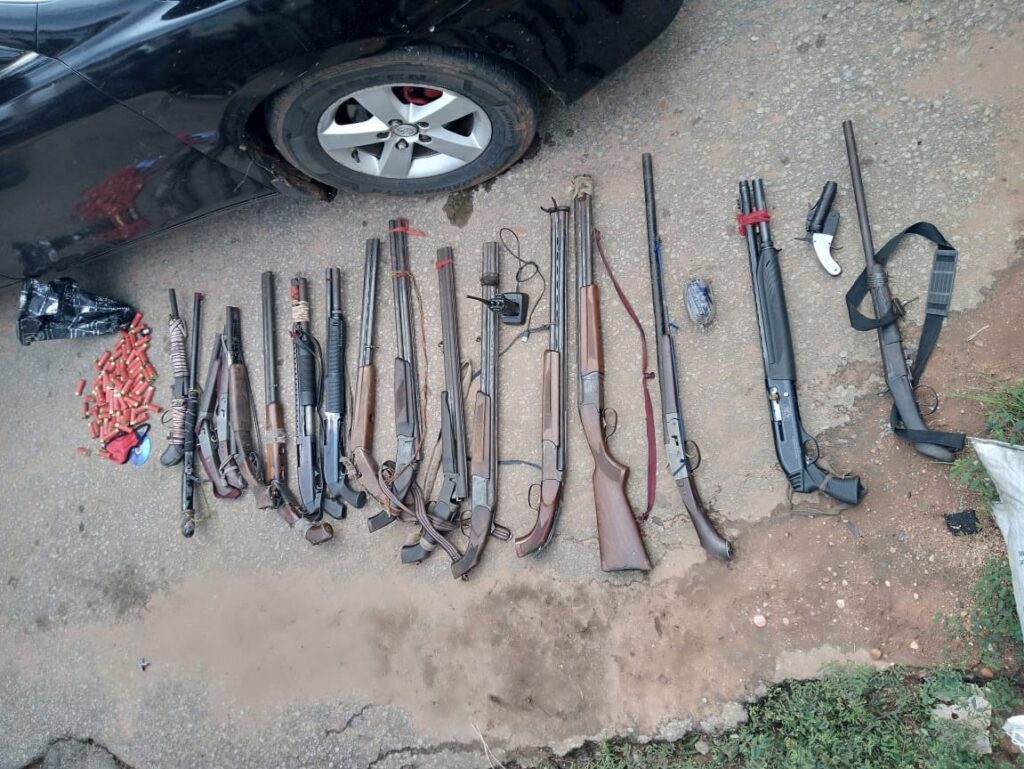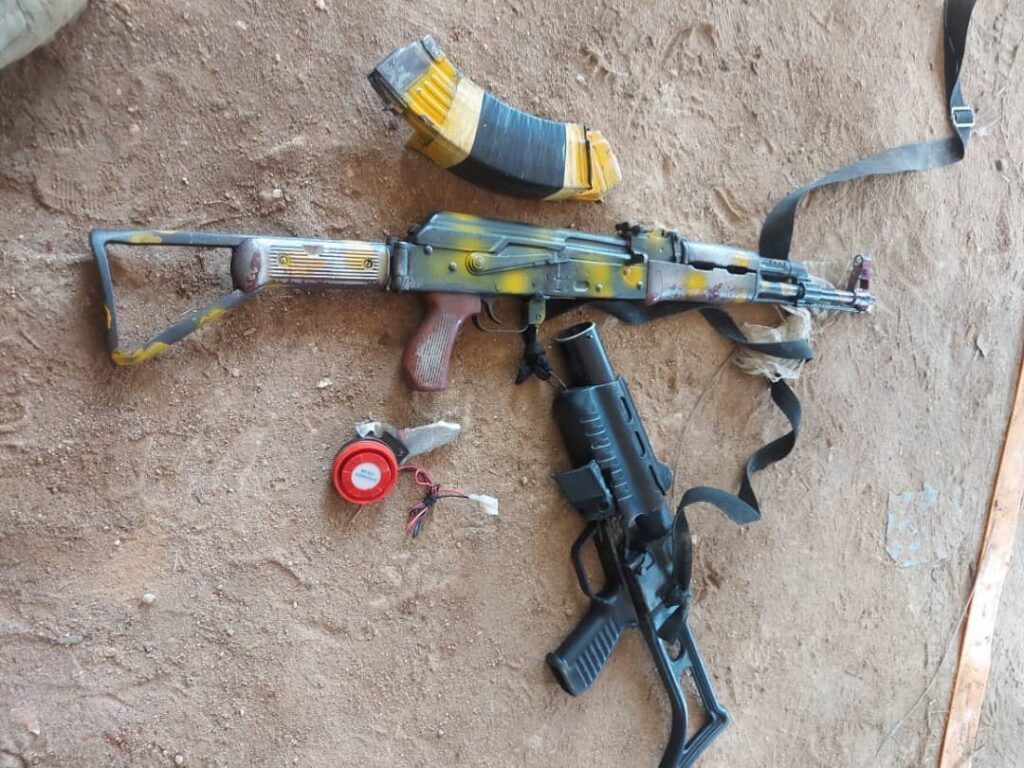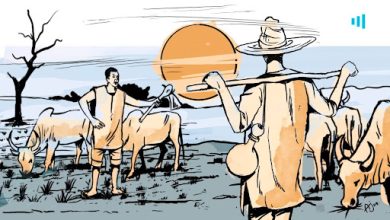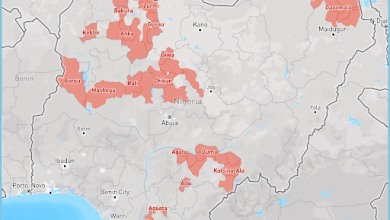What We Know About Nigeria Separatist Group’s Weapons Stockpile
The range of weapons used by IPOB militants appears to consist mainly of firearms from transnational origins, local fabricators, and those stolen from security forces. The group is also considerably skilled in manufacturing explosive devices.

Smuggled shotguns and assault rifles captured or stolen from security forces, particularly the police, make up a significant portion of the weapons stockpile of the separatist group terrorising southeastern Nigeria.
Photosets from press briefings by security forces and open source information, including online videos, provide a glance into the types and possible origins of the weapons used by the separatists.
Over the past few years, the activities of the proscribed Indigenous People of Biafra (IPOB) have led to increasing tension and insecurity in the region. The situation further deteriorated with a surge in attacks on security forces and government facilities after the group established an armed wing known as the Eastern Security Network (ESN) in Dec. 2020.
The most prevalent weapon types in the group’s inventory appear to be pump-action and semi-automatic shotguns with pistol grips sourced from transnational smuggling networks and locally fabricated shotguns and pistols acquired from blacksmiths.

The widespread presence of these weapons is evident in photos from security operations. For instance, in May, a raid by the Army’s 34th Brigade in the Orlu Area of Imo State resulted in the recovery of fabricated and factory-produced long and short-barreled guns and a crafted pistol that appeared to be designed for cartridges also known as shotshells.
They also recovered 80 cartridges in addition to what the Army said was an Improvised Explosive Device (IED). Within the same month, the Army’s 34th Brigade and the Department of State Services (DSS) recovered three Dane guns and two 7.62mm shell casings during a joint operation. The team further retrieved a live unfired 7.62mm bullet and a shotgun cartridge alongside a craft-produced pistol configured to shoot shotshells.
The proliferation of fabricated weapons among non-state actors is a national issue not isolated to the separatist militants and the southeast region. In other parts of the country, these weapons, particularly craft-produced firearms, continue to appear with criminals and vigilante groups due to their accessibility and affordability. Local blacksmiths have additionally been able to make firearms capable of discharging standard ammunition.
Similarly, the prevalence of foreign semi-automatic and pump-action shotguns with separatists is part of a more prominent pattern. A 2020 Conflict Armament Research report on the herder-farmer conflict documented the presence of Turkish-manufactured shotguns reportedly linked to a major organised trafficking network. Foreign shotguns have shown up in the northeast with the Civilian Joint Task Force (CJTF).
The Nigeria Customs Service has previously seized several consignments of shotguns concealed and shipped into the country. In 2017, the federal agency intercepted 2,671 pump action guns imported from Turkey, which marked the fourth seizure within eight months in the port city of Lagos. The government linked IPOB to the consignment as part of its submissions before a court in Abuja while opposing the group’s motion challenging its proscription as a terrorist organisation.

Assault rifles, especially variants of the Kalashnikov (AK), have appeared in arms seizures displayed after security raids and online videos of the separatist militants. These weapons were likely obtained through smuggling channels and from the capture of state stockpiles, particularly after targeting security forces.
The Army’s 34th Brigade in April recovered one Type 56-2 rifle, two duct-taped 7.62×39mm magazines sprayed with yellowish paint, and a police grenade launcher after a fierce gun battle with separatist militants. In February, a raid by the 82nd Division and the police led to the discovery of seven AK pattern rifles, mostly the Type 56-2 variants, two shotguns, and ten magazines. They also retrieved eight cartridges, 74 rounds of 7.62mm ammunition, and a hand grenade.

The Type 56-2 is a Chinese copy of the AK commonly used by some units of the Nigerian Police. The rifle has a side-folding stock and is chambered for the 7.62 ammunition. In May, a video of IPOB on a show of force appeared on Twitter. The separatists had machetes and a shotgun and two rifles that appeared to be Type 56-2.
Last October, the Army recovered an IWI Galil Ace from a group of separatist militants responsible for killing DSS operatives. Agents of the domestic intelligence agency have been targeted by the separatists previously. In April of the same year, security forces displayed weapons and items seized after a joint operation targeted an operational base of the group in the Awomama area of Imo. According to War Noir (@War_noir), a weapons analyst on Twitter, the discovery included two Chinese Type 56-1 rifles, an AKM rifle, and a Tokarev pistol.
In March, the police announced the arrest of 16 IPOB separatists in connection with attacks on soldiers and police officers and stealing of their firearms. One of the photosets from the police showed a Type 56-2, a customised AK pattern rifle with accessories similar to those used by specific police units, several 7.62mm bullets, as well as duct-taped and single magazines. War Noir noted the presence of Type 56 rifles, AKM, and Type 2/3 AKS-47 rifles.

Blocking the flow of illicit arms and ammunition and curbing the loss of state-owned firearms will diminish the lethal capacity of separatist militants. Similarly, the tracking of serial numbers on the assault rifles and shotguns retrieved from the group would provide valuable information that could assist the authorities.
The regulation of blacksmiths and disruption of their capacity to produce lethal weapons not designed for traditional and hunting purposes is essential. These interventions would have to take place alongside broader efforts to address the social, economic, and political drivers of the crisis.
Support Our Journalism
There are millions of ordinary people affected by conflict in Africa whose stories are missing in the mainstream media. HumAngle is determined to tell those challenging and under-reported stories, hoping that the people impacted by these conflicts will find the safety and security they deserve.
To ensure that we continue to provide public service coverage, we have a small favour to ask you. We want you to be part of our journalistic endeavour by contributing a token to us.
Your donation will further promote a robust, free, and independent media.
Donate HereStay Closer To The Stories That Matter




